Why are linux and unix similar?
The original intention of Linux is to replace UNIX and optimize its functions and user experience. Therefore, Linux imitates UNIX (but does not plagiarize the source code of UNIX), making Linux very similar to UNIX in appearance and interaction. . Therefore, it can be said that "UNIX is the father of Linux". It is precisely because Linux and UNIX are inextricably linked that people call Linux a "UNIX-like system."
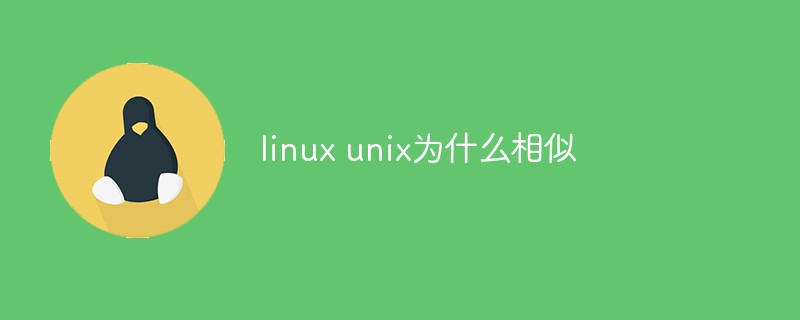
#The operating environment of this tutorial: linux7.3 system, Dell G3 computer.
The relationship between UNIX and Linux is a very interesting topic. Among the current mainstream server-side operating systems, UNIX was born in the late 1960s, Windows was born in the mid-1980s, and Linux was born in the early 1990s. It can be said that UNIX is the "big brother" among operating systems. Later Windows and Linux both referenced UNIX.
Modern Windows systems have developed in the direction of "graphical interfaces", which are hugely different from UNIX systems. On the surface, the relationship between the two cannot even be seen.
The Troubled History of UNIX
The UNIX operating system was created by Ken Thompson and Dennis Ritchie )invention. Part of its technical origins can be traced back to the Multics engineering program started in 1965, which was jointly initiated by Bell Labs, MIT, and General Electric Company. The goal was to develop an interactive, multi-program processing capable time-sharing operating system to replace the widely used batch operating system at the time.
Description: The time-sharing operating system enables one computer to serve multiple users at the same time. The terminal user connected to the computer issues commands interactively, and the operating system uses time slice rotation to process the user's service request. And display the results on the terminal (the operating system divides the CPU time into several segments, called time slices). The operating system takes time slices as units and serves each end user in turn, one time slice at a time.
Unfortunately, because the goal pursued by the Multics engineering plan was so huge and complex that its developers did not know what to do, it ultimately ended in failure.
Bell Labs researchers headed by Ken Thompson learned from the failure of the Multics project plan and implemented a prototype of a time-sharing operating system in 1969. In 1970, the system was officially named UNIX .
Think about the prefixes Multi and Uni in English, and you will understand the hidden meaning of UNIX. Multi means big, big and complex; Uni means small, small and clever. This was the original design intention of UNIX developers, and this concept continues to influence today.
What’s interesting is that Ken Thompson’s original intention to develop UNIX was to run a computer game he wrote called Space Travel. This game simulates the movement of celestial bodies in the solar system. Players drive a spacecraft, enjoy the scenery and try to navigate various Landing on planets and moon. He tried it on multiple systems, but the operating results were not satisfactory, so he decided to develop his own operating system. In this way, UNIX was born.
Since 1970, UNIX systems have gradually become popular among programmers within Bell Labs. From 1971 to 1972, Ken Thompson's colleague Dennis Ritchie invented the legendary C language, a high-level language suitable for writing system software. Its birth was an important milestone in the development of the UNIX system, and it announced In the development of operating systems, assembly language is no longer the dominant language.
By 1973, most of the source code of the UNIX system was rewritten in C language, which laid the foundation for improving the portability of the UNIX system (previously, the operating system mostly used assembly language, which required a lot of effort on the hardware. strong dependence), also creates conditions for improving the development efficiency of system software. It can be said that the UNIX system and the C language are twin brothers and have an inseparable relationship.
In the early 1970s, there was another great invention in the computer industry-TCP/IP protocol, which was a network protocol developed by the U.S. Department of Defense after it took over ARPAnet. The U.S. Department of Defense bundled the TCP/IP protocol with the UNIX system and C language, and AT&T issued non-commercial licenses to various universities in the United States. This kicked off the development of the UNIX system, C language, and TCP/IP protocol. They have influenced the three fields of operating systems, programming languages, and network protocols to this day respectively. Ken Thompson and Dennis Ritchie received the Turing Award, the highest award in computer science, in 1983 for their outstanding contributions to the field of computing.
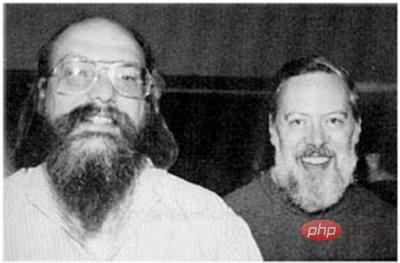
Picture 1 is a photo of Ken Thompson and Dennis Ritchie. Geniuses are all slovenly...
Various versions of UNIX systems appeared subsequently, and currently Common ones include Sun Solaris, FreeBSD, IBM AIX, HP-UX, etc.
Solaris and FreeBSD
Let’s focus on Solaris, which is an important branch of the UNIX system. In addition to running on the SPARC CPU platform, Solaris can also run on the x86 CPU platform. In the server market, Sun's hardware platform has high availability and high reliability and is the dominant UNIX system in the market.
For users who have difficulty accessing Sun SPARC architecture computers, they can experience the commercial UNIX style of world-renowned manufacturers by using Solaris x86. Of course, Solaris x86 can also be used in servers for actual production applications. Solaris x86 can be used for free for study, research or commercial applications, subject to Sun's relevant licensing terms.
FreeBSD originated from the UNIX version developed by the University of California, Berkeley. It is developed and maintained by volunteers from all over the world, providing varying degrees of support for computer systems of different architectures. FreeBSD is released under the BSD license agreement, which allows anyone to use and distribute it freely while retaining the copyright and license agreement information. It does not restrict the release of FreeBSD code under another agreement, so commercial companies can freely integrate FreeBSD code into in their products. Apple's OS X is an operating system based on FreeBSD.
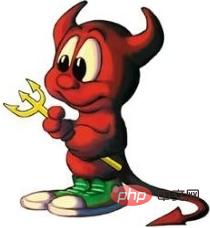
The user groups of FreeBSD and Linux overlap considerably. The hardware environments supported by the two are also relatively consistent, and the software used is also relatively similar. The biggest feature of FreeBSD is its stability and efficiency, making it a good choice as a server operating system; however, its hardware support is not as complete as Linux, so it is not suitable as a desktop system.
Other UNIX versions will not be introduced too much here due to their relatively limited scope of application.
Those past events of Linux
The Linux kernel was first published by Linus Torvalds while he was studying at the University of Helsinki. It was written as a personal hobby. At that time, he felt that the mini version of the UNIX operating system Minix used for teaching was too difficult to use, so he decided to develop an operating system by himself. Version 1 was released in September 1991 with only 10,000 lines of code.
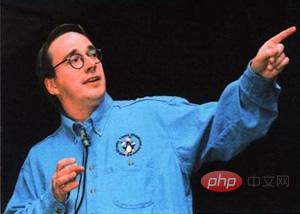
Linus Torvalds did not retain the copyright of the Linux source code, made the code public, and invited others to improve Linux. Unlike Windows and other proprietary operating systems, Linux is open source and anyone can use it for free.
It is estimated that only 2% of the Linux core code is now written by Linus Torvalds himself, although he still owns the Linux kernel (the core part of the operating system) and retains the option of new code and final authority for new methods that require incorporation. The Linux that everyone is using now, I prefer to say that it was jointly developed by Linus Torvalds and many Linux enthusiasts who joined later.
Linus Torvalds is undoubtedly one of the greatest programmers in the world. What's more, he also created the world's largest programmer dating community GitHub (open source code base and version control system ).
The origin of the Linux Logo is a very interesting topic. It is a penguin.
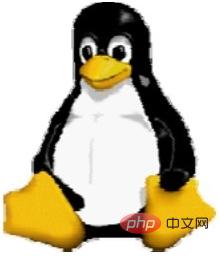
Why choose a penguin instead of a lion, tiger or little white rabbit? Some people say that Linus Torvalds chose penguins because he is Finnish. Some people say that because all other animal patterns were used up, Linus Torvalds had to choose penguins.
I prefer to believe the following statement. Penguins are the iconic animals of Antarctica. According to international conventions, Antarctica is owned by all mankind and does not belong to any country in the world. However, no country has the right to include Antarctica in its territory. . Linux chose the penguin pattern as its logo, which means: open source Linux is owned by all mankind, but the company has no right to keep it private.
The close relationship between UNIX and Linux
The relationship between the two is not that of elder brother and younger brother. The statement "UNIX is the father of Linux" is more Yidang. The reason why I want to introduce their relationship is to tell readers that Linux and UNIX actually have a lot in common when learning. Simply put, if you have mastered Linux, it will be very easy to start using UNIX. .
There are also two big differences between the two:
UNIX systems are mostly matched with hardware, that is to say, most UNIX systems For example, AIX, HP-UX, etc. cannot be installed on x86 servers and personal computers, while Linux can run on a variety of hardware platforms;
UNIX is commercial software, and Linux It is open source software, free and open source code.
Linux is loved by most computer enthusiasts for two main reasons:
It is open source software. Users can obtain it and its source code without paying any fees, and can make necessary modifications to it according to their own needs, use it free of charge, and continue to spread it without restrictions. ;
It has all the functions of UNIX. Anyone who uses the UNIX operating system or wants to learn the UNIX operating system can benefit from Linux.
Open source software is a model different from commercial software. Literally, it means open source code. You don’t have to worry about any tricks in it. This will bring about software innovation. and safety.
In addition, open source does not actually mean free, but a new software profit model. Currently, many software are open source software, which has a profound impact on the computer industry and the Internet.
Summarize the relationship/difference between Linux and UNIX
Linux is an operating system similar to Unix. Unix is earlier than Linux. The original intention of Linux is to replace UNIX. And optimize functions and user experience, so Linux imitates UNIX (but does not plagiarize UNIX source code), making Linux very similar to UNIX in appearance and interaction.
If you say imitation, you may get criticized. You can also say micro-innovation or improvement.
Compared with UNIX, the biggest innovation of Linux is that it is open source and free, which is the most important reason for its vigorous development; while most of the current UNIX is paid, which is difficult for small companies and individuals to use bear.
It is precisely because Linux and UNIX are inextricably linked that people call Linux a "UNIX-like system".
Related recommendations: "Linux Video Tutorial 》
The above is the detailed content of Why are linux and unix similar?. For more information, please follow other related articles on the PHP Chinese website!

Hot AI Tools

Undresser.AI Undress
AI-powered app for creating realistic nude photos

AI Clothes Remover
Online AI tool for removing clothes from photos.

Undress AI Tool
Undress images for free

Clothoff.io
AI clothes remover

AI Hentai Generator
Generate AI Hentai for free.

Hot Article

Hot Tools

Notepad++7.3.1
Easy-to-use and free code editor

SublimeText3 Chinese version
Chinese version, very easy to use

Zend Studio 13.0.1
Powerful PHP integrated development environment

Dreamweaver CS6
Visual web development tools

SublimeText3 Mac version
God-level code editing software (SublimeText3)

Hot Topics
 deepseek web version entrance deepseek official website entrance
Feb 19, 2025 pm 04:54 PM
deepseek web version entrance deepseek official website entrance
Feb 19, 2025 pm 04:54 PM
DeepSeek is a powerful intelligent search and analysis tool that provides two access methods: web version and official website. The web version is convenient and efficient, and can be used without installation; the official website provides comprehensive product information, download resources and support services. Whether individuals or corporate users, they can easily obtain and analyze massive data through DeepSeek to improve work efficiency, assist decision-making and promote innovation.
 How to install deepseek
Feb 19, 2025 pm 05:48 PM
How to install deepseek
Feb 19, 2025 pm 05:48 PM
There are many ways to install DeepSeek, including: compile from source (for experienced developers) using precompiled packages (for Windows users) using Docker containers (for most convenient, no need to worry about compatibility) No matter which method you choose, Please read the official documents carefully and prepare them fully to avoid unnecessary trouble.
 Ouyi okx installation package is directly included
Feb 21, 2025 pm 08:00 PM
Ouyi okx installation package is directly included
Feb 21, 2025 pm 08:00 PM
Ouyi OKX, the world's leading digital asset exchange, has now launched an official installation package to provide a safe and convenient trading experience. The OKX installation package of Ouyi does not need to be accessed through a browser. It can directly install independent applications on the device, creating a stable and efficient trading platform for users. The installation process is simple and easy to understand. Users only need to download the latest version of the installation package and follow the prompts to complete the installation step by step.
 BITGet official website installation (2025 beginner's guide)
Feb 21, 2025 pm 08:42 PM
BITGet official website installation (2025 beginner's guide)
Feb 21, 2025 pm 08:42 PM
BITGet is a cryptocurrency exchange that provides a variety of trading services including spot trading, contract trading and derivatives. Founded in 2018, the exchange is headquartered in Singapore and is committed to providing users with a safe and reliable trading platform. BITGet offers a variety of trading pairs, including BTC/USDT, ETH/USDT and XRP/USDT. Additionally, the exchange has a reputation for security and liquidity and offers a variety of features such as premium order types, leveraged trading and 24/7 customer support.
 Get the gate.io installation package for free
Feb 21, 2025 pm 08:21 PM
Get the gate.io installation package for free
Feb 21, 2025 pm 08:21 PM
Gate.io is a popular cryptocurrency exchange that users can use by downloading its installation package and installing it on their devices. The steps to obtain the installation package are as follows: Visit the official website of Gate.io, click "Download", select the corresponding operating system (Windows, Mac or Linux), and download the installation package to your computer. It is recommended to temporarily disable antivirus software or firewall during installation to ensure smooth installation. After completion, the user needs to create a Gate.io account to start using it.
 Ouyi Exchange Download Official Portal
Feb 21, 2025 pm 07:51 PM
Ouyi Exchange Download Official Portal
Feb 21, 2025 pm 07:51 PM
Ouyi, also known as OKX, is a world-leading cryptocurrency trading platform. The article provides a download portal for Ouyi's official installation package, which facilitates users to install Ouyi client on different devices. This installation package supports Windows, Mac, Android and iOS systems. Users can choose the corresponding version to download according to their device type. After the installation is completed, users can register or log in to the Ouyi account, start trading cryptocurrencies and enjoy other services provided by the platform.
 How to automatically set permissions of unixsocket after system restart?
Mar 31, 2025 pm 11:54 PM
How to automatically set permissions of unixsocket after system restart?
Mar 31, 2025 pm 11:54 PM
How to automatically set the permissions of unixsocket after the system restarts. Every time the system restarts, we need to execute the following command to modify the permissions of unixsocket: sudo...
 Why does an error occur when installing an extension using PECL in a Docker environment? How to solve it?
Apr 01, 2025 pm 03:06 PM
Why does an error occur when installing an extension using PECL in a Docker environment? How to solve it?
Apr 01, 2025 pm 03:06 PM
Causes and solutions for errors when using PECL to install extensions in Docker environment When using Docker environment, we often encounter some headaches...





